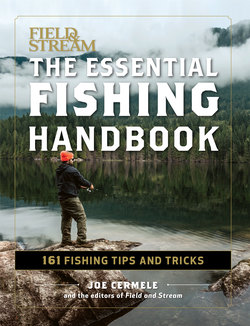Читать книгу The Essential Fishing Handbook - Joe Cermele - Страница 34
На сайте Литреса книга снята с продажи.
Оглавление19
CHANGE HOOKS
FOR BETTER FISHING
18
Adjustyour
bobber to the fish
BLUEGILLS When bluegills are on or near spawning beds in early spring, set your bobber to fish shallow with only or feet (.6 to . m) of line, holding your bait a few inches off the boom. Later in summer, when bigger bluegills have moved to offshore boom humps to feet ( to . m) deep, slide your bobber stop up the line to fish the same terminal gear at those depths.
TROUT For both resident stream trout and steelhead, adapt the tactic to moving water. To work a run of moderate current that’s feet (. m) deep, set your bobber so the worm, salmon egg, or small jig is just above the boom as the bobber dris with the current. Cast up and across the stream, then hold your rod high; keep as much slack line as possible out of the current to avoid drag on the bobber while following the dri with your rod. When the bobber pauses or darts underwater, set the hook.
WALLEYES Put a wriggly leech on a size 6 or hook, add some small split shots, and set your slip bobber to fish at the same depth as the outside edge of a deep weedline. Ideally, a light breeze will dri both your boat and the floating bobber slowly along the edges of the vegetation, so you’ll cover lots of water with very lile effort.
BASS Set your slip bobber shallow to fish a frisky -inch (. cm) live shiner along shoreline structure. When you come to some deeper structure off a shoreline point, it takes only a few seconds to adjust your bobber stop and fish the same shiner feet ( m) deeper and right on the money.
Remove those treble hooks from your lures and replace them with straight-shank hooks one size larger. Attach the single hook to the lure’s
forward hook mount and leave the rear bare. Fish often hit lures headfirst, so you will get just as many hookups, and the release will be easier.
